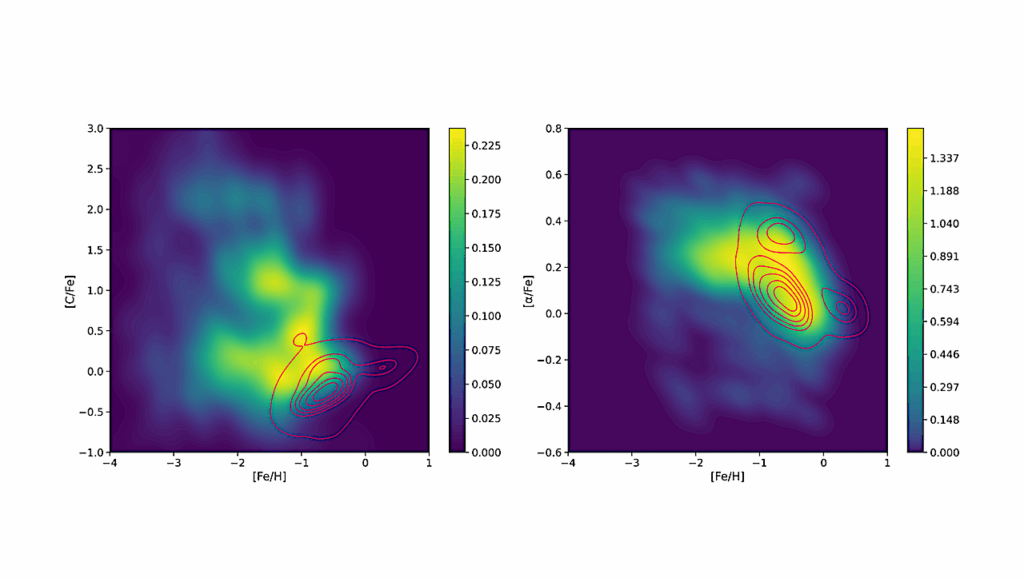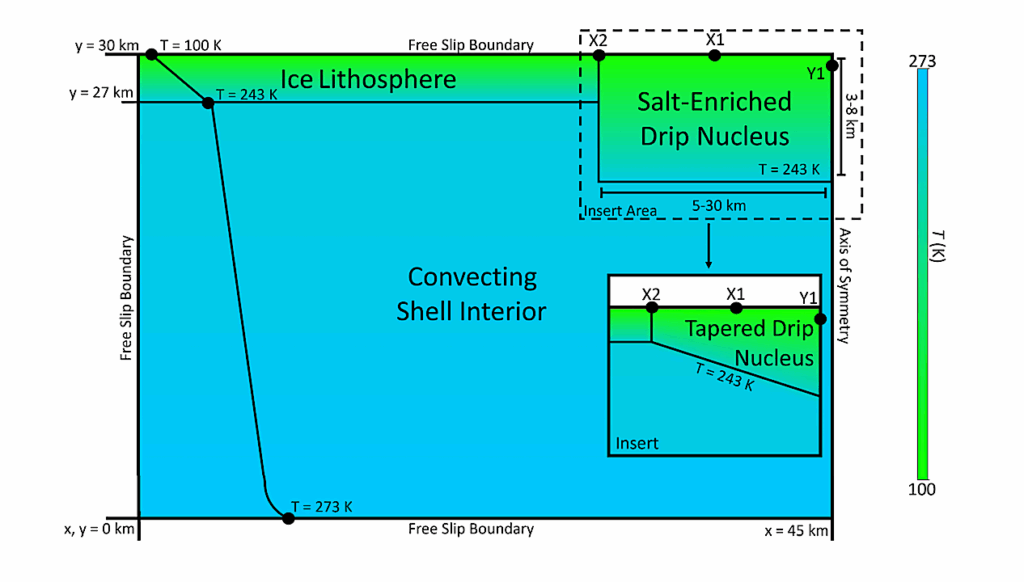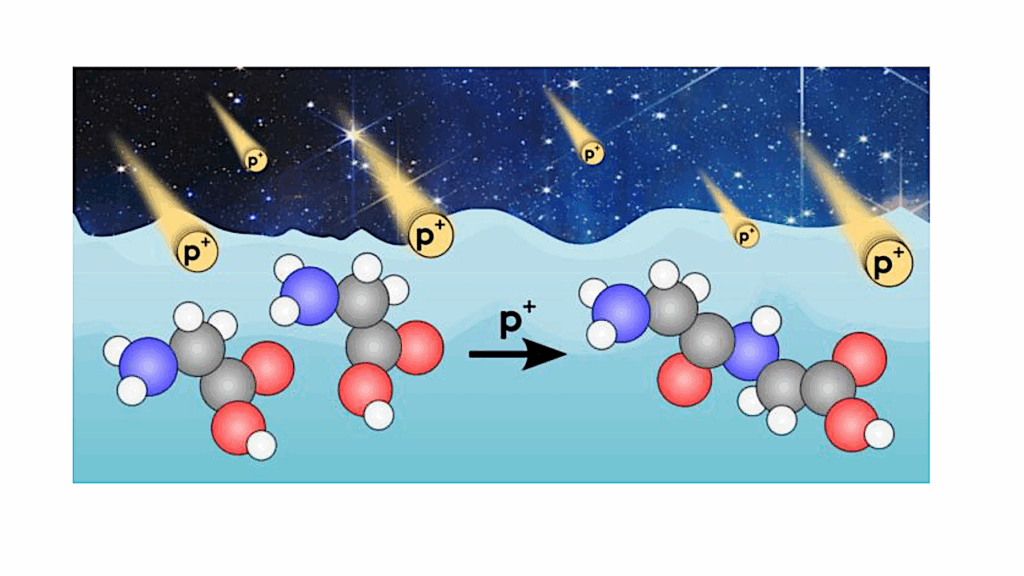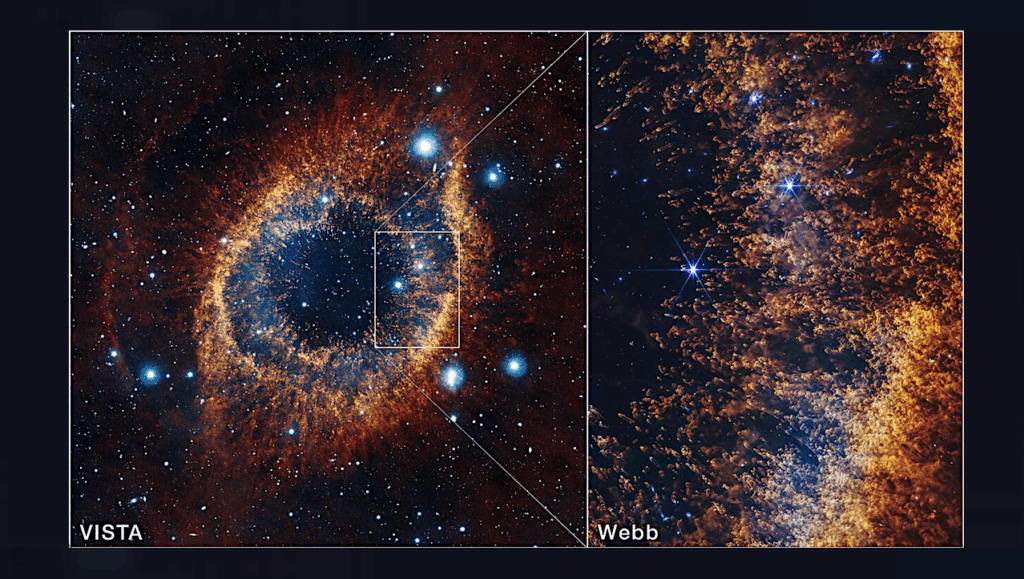Carbonaceous Dust Grains Within Galaxies Seen In The First Billion Years Of Cosmic Time
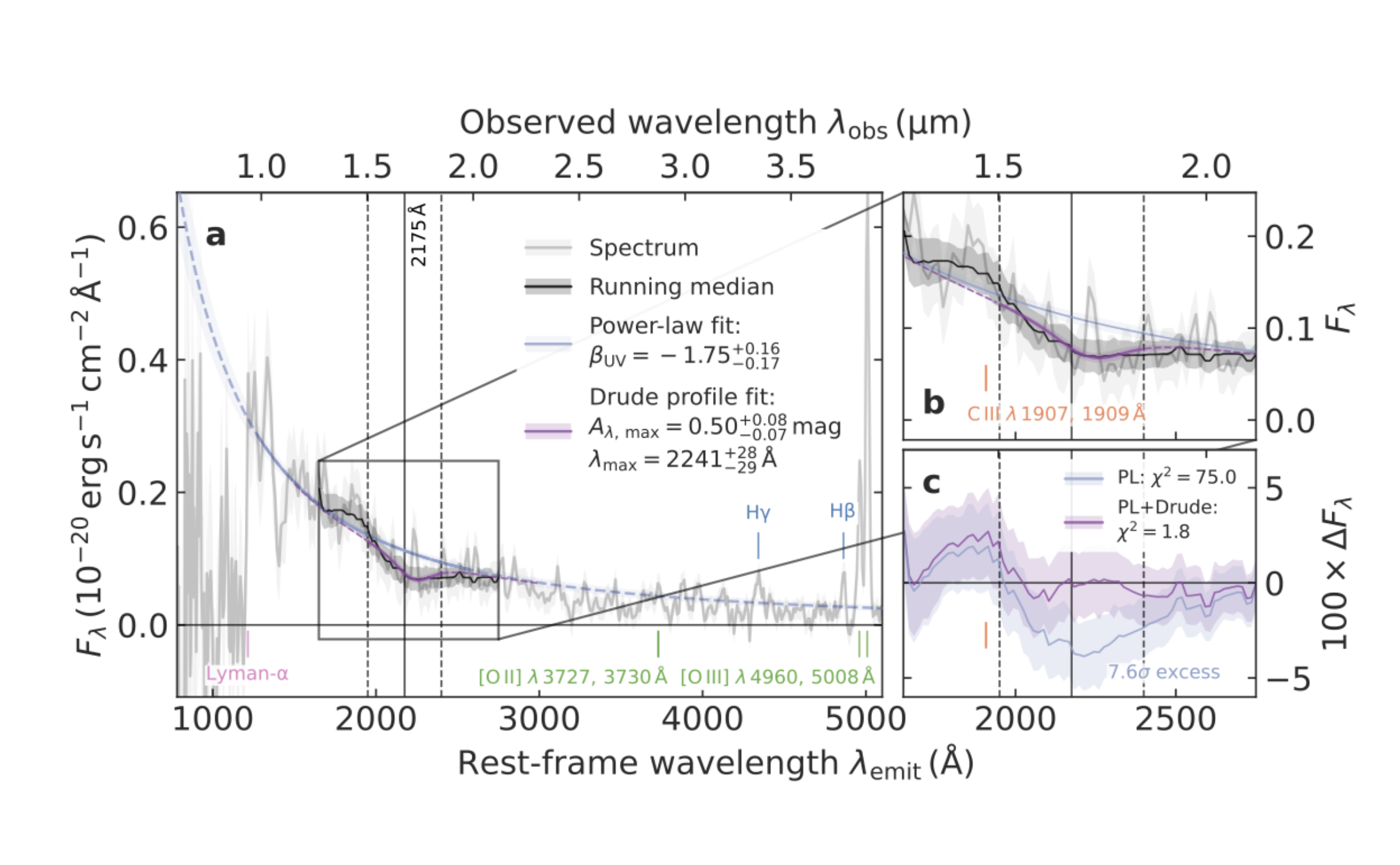
Interstellar dust captures a significant fraction of elements heavier than helium in the solid state and is an indispensable component both in theory and observations of galaxy evolution.
Dust emission is generally the primary coolant of the interstellar medium (ISM) and facilitates the gravitational collapse and fragmentation of gas clouds from which stars form, while altering the emission spectrum of galaxies from ultraviolet (UV) to far-infrared wavelengths through the reprocessing of starlight. However, the astrophysical origin of various types of dust grains remains an open question, especially in the early Universe.
Here we report direct evidence for the presence of carbonaceous grains from the detection of the broad UV absorption feature around 2175A˚ in deep near-infrared spectra of galaxies up to the first billion years of cosmic time, at a redshift (z) of ∼7. This dust attenuation feature has previously only been observed spectroscopically in older, more evolved galaxies at redshifts of z<3. The carbonaceous grains giving rise to this feature are often thought to be produced on timescales of hundreds of millions of years by asymptotic giant branch (AGB) stars. Our results suggest a more rapid production scenario, likely in supernova (SN) ejecta.
Joris Witstok, Irene Shivaei, Renske Smit, Roberto Maiolino, Stefano Carniani, Emma Curtis-Lake, Pierre Ferruit, Santiago Arribas, Andrew J. Bunker, Alex J. Cameron, Stephane Charlot, Jacopo Chevallard, Mirko Curti, Anna de Graaff, Francesco D’Eugenio, Giovanna Giardino, Tobias J. Looser, Tim Rawle, Bruno Rodríguez del Pino, Chris Willott, Stacey Alberts, William M. Baker, Kristan Boyett, Eiichi Egami, Daniel J. Eisenstein, Ryan Endsley, Kevin N. Hainline, Zhiyuan Ji, Benjamin D. Johnson, Nimisha Kumari, Jianwei Lyu, Erica Nelson, Michele Perna, Marcia Rieke, Brant E. Robertson, Lester Sandles, Aayush Saxena, Jan Scholtz, Fengwu Sun, Sandro Tacchella, Christina C. Williams, Christopher N. A. Willmer
Comments: 27 pages, 7 figures. Submitted
Subjects: Astrophysics of Galaxies (astro-ph.GA)
Cite as: arXiv:2302.05468 [astro-ph.GA] (or arXiv:2302.05468v1 [astro-ph.GA] for this version)
Submission history
From: Joris Witstok
[v1] Fri, 10 Feb 2023 19:00:45 UTC (1,507 KB)
https://arxiv.org/abs/2302.05468
Astrobiology, Astrochemistry


